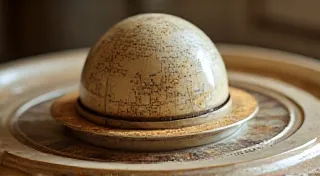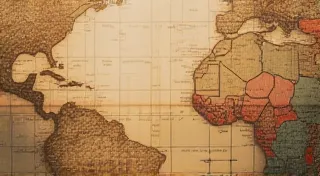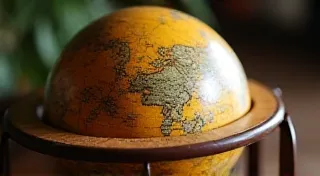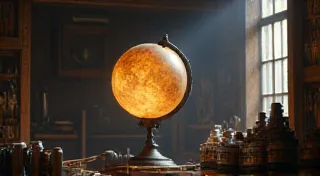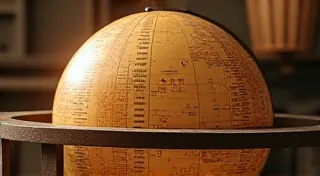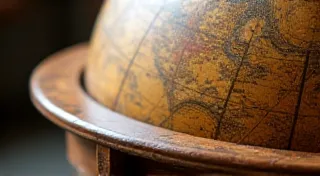Dealing with Fading Ink on Antique Globe Maps
The allure of antique globes lies not just in their artistry and craftsmanship, but also in the historical record they hold within their painted maps. These miniature worlds, often centuries old, offer a fascinating glimpse into the cartography and understanding of our planet at a specific point in time. However, a common and disheartening issue arises: fading ink. This article explores the causes of this fading, the limited options for dealing with it, and the crucial importance of ethical preservation practices when dealing with these invaluable pieces of history.
Why Ink Fades: Understanding the Culprits
The fading of ink on antique globe maps isn't a simple problem with one easy solution. It’s typically the result of a complex interplay of factors that have acted upon the pigments over decades, or even centuries. Here are some of the most significant causes:
- Light Exposure: Perhaps the most damaging factor, prolonged exposure to sunlight and artificial light breaks down the pigments in the inks. UV rays are particularly destructive.
- Humidity and Temperature Fluctuations: Cycles of humidity and temperature expansion and contraction can cause the inks to crack and flake.
- Air Pollution: Historical air quality, even seemingly minor pollutants, could have contributed to chemical reactions that degrade the pigments.
- Ink Composition: The inks used in antique globes were often made from natural materials, and their instability varies considerably depending on the pigments and binders used. Some pigments are inherently more susceptible to fading than others. Iron gall ink, common in earlier globes, is particularly prone to corrosion.
- Original Quality of Materials: The quality of materials used in the globe's manufacture wasn’t always consistent. Substandard pigments could fade more rapidly.
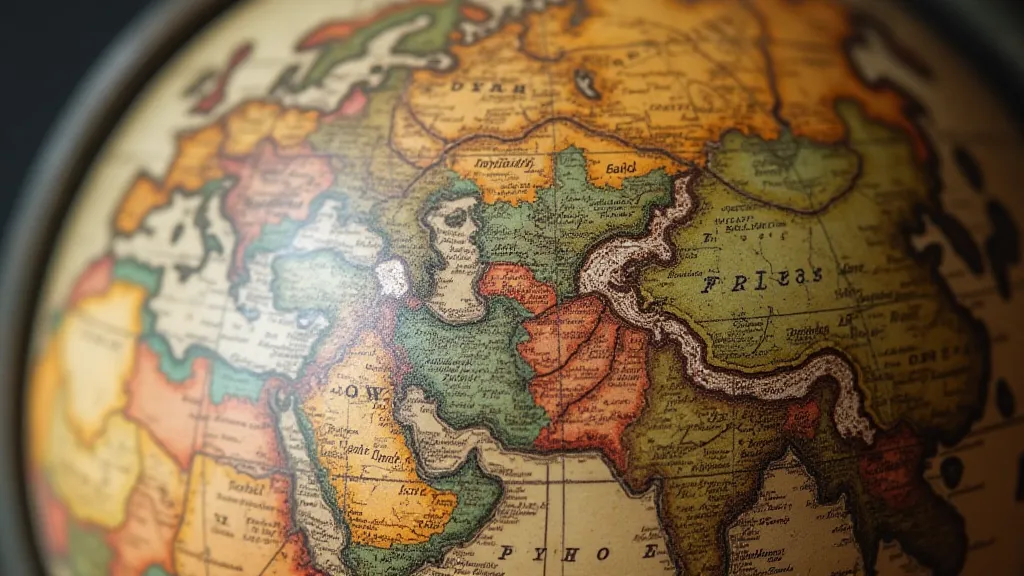
What Can Be Done? Limited Restoration Options
The unfortunate reality is that reversing significant ink fading is generally impossible. The chemical breakdown that occurs is irreversible. However, there are some steps that can be taken to stabilize the existing condition and, in some very limited cases, *slightly* improve the appearance, always with caution and ethical considerations.
- Stabilization: The primary goal is to prevent further degradation. This includes careful cleaning (using appropriate, conservation-grade materials and methods – best left to professionals!), proper storage conditions (low humidity, away from direct light), and potentially, a consolidant applied by a conservator to help hold the remaining pigment in place.
- Retouching (with extreme caution): In *very limited* circumstances, a skilled conservator *might* undertake very subtle retouching to fill small losses. This is a controversial practice and should only be considered when the loss significantly detracts from the overall appearance and historic context. Any retouching must be clearly distinguishable from the original ink.
- Photography and Documentation: A valuable option is to create high-resolution photographs and digital scans of the globe, preserving its appearance for future generations, even if the physical condition continues to decline.
Crucially, aggressive cleaning, repainting, or “fixing” of faded areas is highly discouraged. These actions almost invariably diminish the historical value and authenticity of the globe.
Ethical Considerations: Preservation, Not Restoration
When dealing with antique globes and faded maps, a preservation mindset is paramount. We are not attempting to recreate a perfect replica of the original appearance; we are striving to preserve what remains as a valuable historical artifact. Here are some key ethical principles to follow:
- Reversibility: Any treatment undertaken should be reversible, meaning it should not permanently alter the original materials.
- Minimal Intervention: Do as little as possible. Avoid treatments that are unnecessary or potentially harmful.
- Documentation: Meticulously document any treatments performed, including materials used, techniques employed, and the rationale behind the actions.
- Transparency: If you are selling or displaying the globe, be transparent about the level of fading and any conservation treatments that have been undertaken.
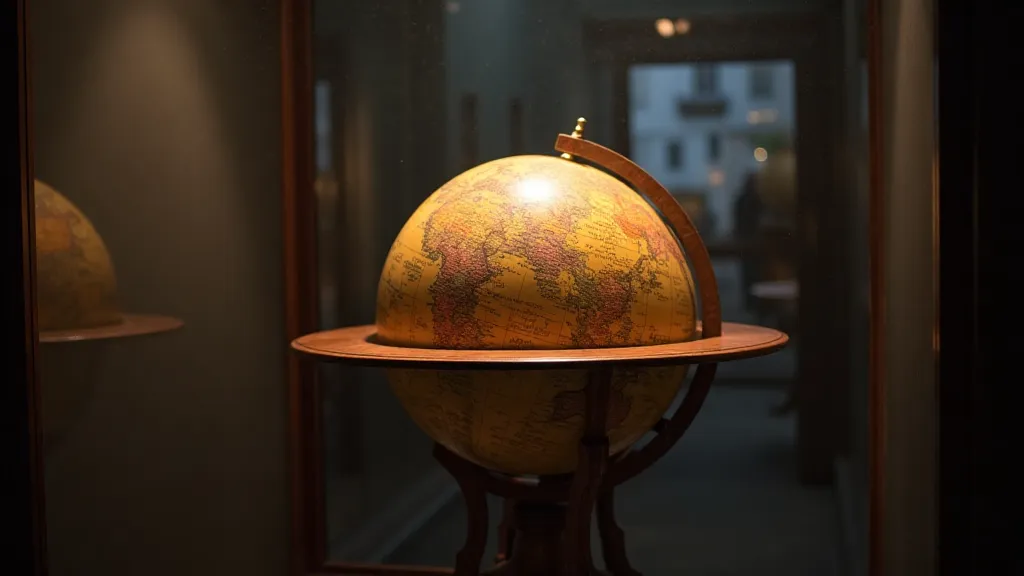
Seeking Professional Help
Due to the complexity of globe repair and the delicate nature of antique maps, it's highly recommended to consult with a qualified conservator specializing in paper and cartographic materials. They possess the knowledge, experience, and appropriate tools to assess the condition of the globe, recommend the most appropriate course of action, and carry out any necessary treatments.
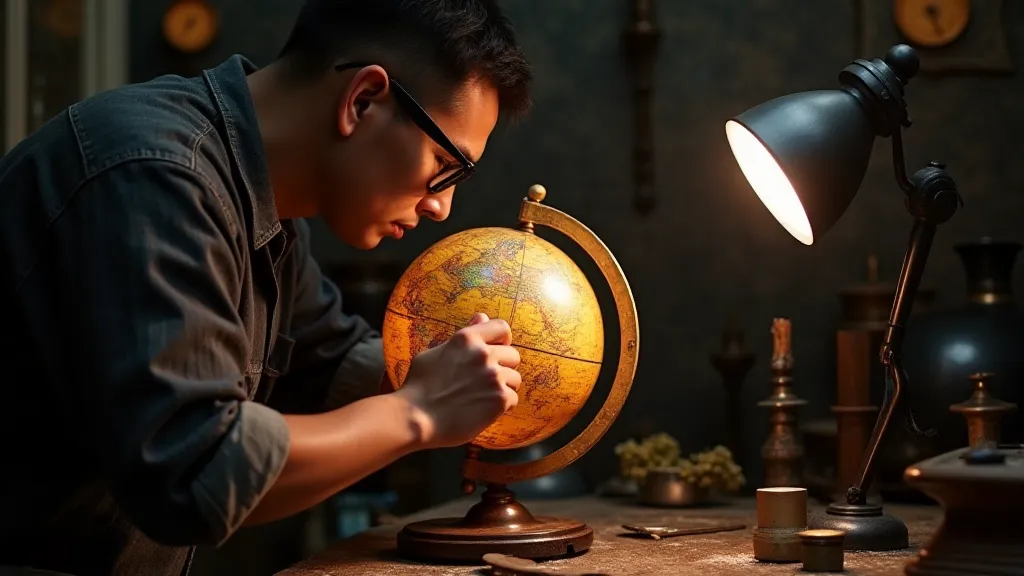
Preserving antique globes is a responsibility. By understanding the causes of ink fading and adhering to ethical preservation principles, we can ensure that these fascinating pieces of history continue to inspire and educate future generations.
